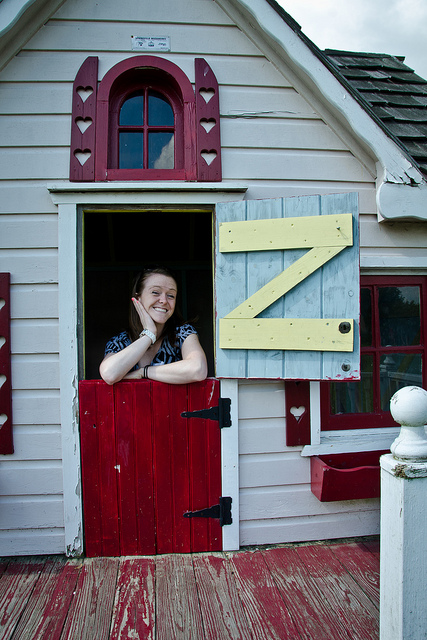7 Ways Your Home Can Affect Your Mood
 Home is where the heart is and it can influence your sense of well-being much more than you might have thought. Here are 7 aspects of your house which may deeply affect you in body, mind, or spirit. Find out how to work with them and create a positive home environment that will nurture you and your family.
Home is where the heart is and it can influence your sense of well-being much more than you might have thought. Here are 7 aspects of your house which may deeply affect you in body, mind, or spirit. Find out how to work with them and create a positive home environment that will nurture you and your family.
Ceiling height. Higher ceilings apparently make a home's occupants feel freer physically and cognitively. Lofty rooms are ideal for encouraging abstract thinking, but lower ceilings are preferable when you need to focus on a detail-oriented task. Interestingly, it's not the actual room height that makes the difference but rather your perception of it. So if you're a creative type looking for inspiration, you might want to install lighting or hire a painter to virtually "raise the roof."
The view. Green is good, according to psychologists. Looking out over a natural green landscape reduces mental fatigue and increases the ability to pay attention. When you are in the midst of intense concentration on, say, learning a complex new skill, stopping to see the roses will give you renewed energy. Are you stuck with an uber-urban cityscape outside your window? Then bring nature into your home via a collection of well-loved houseplants, and let your gaze linger on them often.
Light. Inadequate exposure to daylight can disrupt your circadian rhythms. The result is that spending long periods in a dim house may lead to an effect similar to jet lag. On the other hand, sleeping in a dark room increases levels of melatonin, a mood-regulating hormone which is produced by the human body mainly at night. To counteract, try to spend at least some time outside during the day, weather permitting; go for a walk or have lunch on the deck. Indoors, supplement scanty light with soft, glowing lamps instead of harsh overhead fixtures. Before you hit the hay, make sure your curtains are closed and lights are off.
Objects. As many of us know only too well, an excess of clutter, especially in public areas like your living room, will bog you down and put guests on edge. On the other hand, an overly spare decor can be equally disconcerting. Display carefully chosen personal objects that you love and that give a sense of who you and your household members are. Some good examples: beloved books, children's artwork, and souvenirs of vacations or other happy moments.
Shapes. Pointy corners on furnishings or countertops are hazardous for small children. For us kids at heart, these sharp edges are still perceived as dangerous, making it hard us to relax in a room whose design includes too many abrupt angles. The solution? Incorporate some curves into your home decor. This can be as simple as sewing some curvy cushions or hanging a circular mirror, for example.
Colors. There is an entire science, called color psychology, devoted to understanding how different colors can evoke powerful emotional responses in human beings. In general, tranquil blues and greens are favored for decorating large expanses, such as painting the walls of living room. White will make a small space look larger, but it's best complemented with a splash of stronger color to keep it from seeming too bland. Try bold red, black, or yellow accents.
Room arrangement. A great winter project is simply reorganizing the furniture and other items in a room or two. Shake things up and experiment with rearranged seating arrangements, perhaps, or position your desk next to the window that frames your flower garden. You may end up with a whole new perspective on your home.
Laura Firszt writes for networx.com.
Updated March 22, 2018.
Looking for a Pro? Call us (866) 441-6648

Painting Average Costs
Painters Experiences

Repainting Our Kitchen Cabinets Was A Small Fix With Big Impact

Hire A Meticulous, Highly Professional Plumber For Peace Of Mind



